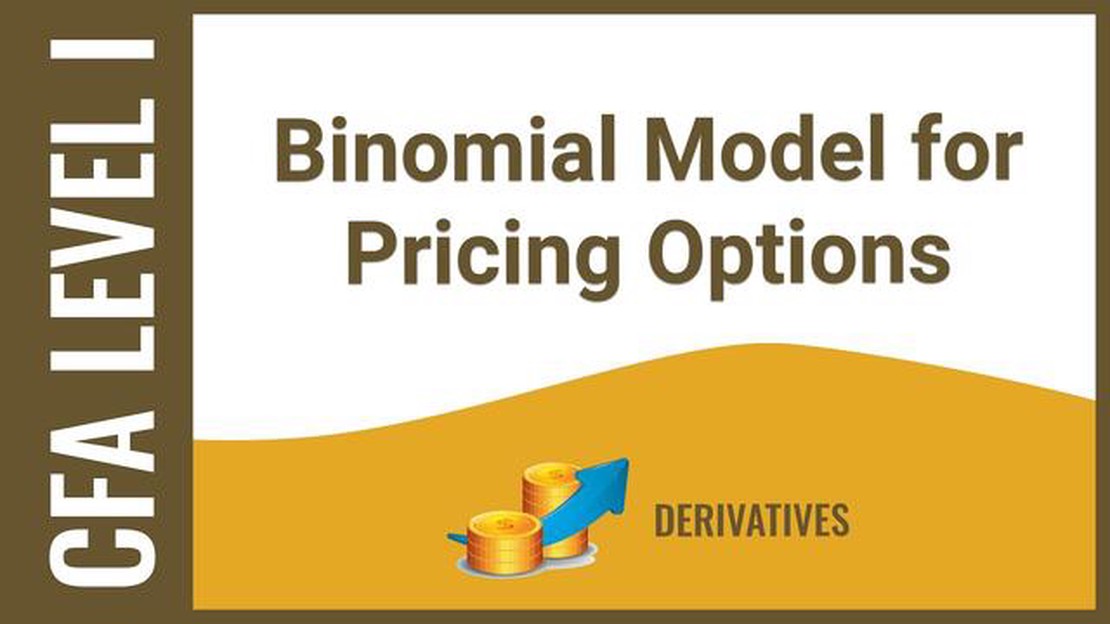Does Forex Pay Real Money? Discover the Potential Earnings in Forex Trading
Does Forex Trading Actually Generate Real Money? Forex trading, also known as foreign exchange trading, has gained popularity in recent years as a …
Read Article
In binomial option pricing, the stock price is modeled as a binomial tree. The two parameters, U and D, determine the upward and downward movements of the stock price. Understanding these parameters is vital for accurately valuing options and making investment decisions.
U and D represent the factors by which the stock price will move in each period. U represents the upward movement, indicating how much the stock price will increase. D represents the downward movement, indicating how much the stock price will decrease.
U and D can be calculated using the parameters of the model. The risk-free interest rate, r, and the time duration, t, are used to calculate the values of U and D.
U can be calculated as U = e^(σ√t), where σ is the volatility of the stock price.
D can be calculated as D = e^(-σ√t).
Read Also: Understanding Moving Averages Divergence: A Comprehensive Guide
The values of U and D have a significant impact on option prices. If U and D are close to 1, the stock price is less volatile, and the option price will be closer to its intrinsic value. On the other hand, if U and D are far from 1, the stock price is more volatile, and the option price will deviate further from its intrinsic value.
Furthermore, the relationship between U and D affects the option prices. If U > D, the stock price is expected to have an upward bias, resulting in a higher option price. If D > U, the stock price is expected to have a downward bias, resulting in a lower option price.
Understanding the parameters U and D is crucial in binomial option pricing. These parameters determine the upward and downward movements of the stock price. By accurately calculating and analyzing U and D, investors can make informed decisions when valuing options and managing their portfolios.
Binomial option pricing is a mathematical model used to calculate the theoretical value of an option. It is based on the assumptions that the underlying asset price can only move up or down over a period of time, and that the option can only be exercised at expiration.
In this model, the price of the underlying asset is represented by a binomial tree, which consists of nodes representing the possible prices of the asset at different points in time. The tree starts at the current price of the asset and branches out at each time step, with each branch representing the possible price movements of the asset.
At each node, the option value is calculated by discounting the expected future payoffs of the option. The expected future payoffs are calculated using the risk-neutral probability, which is the probability of the asset price going up or down, adjusted for the risk-free rate of return.
The binomial option pricing model allows traders and investors to determine the fair value of an option and make informed decisions about buying or selling options. It is especially useful for pricing options with multiple exercise dates and for valuing options in situations where the assumptions of the Black-Scholes model, such as continuous price changes, are not valid.
| Advantages | Disadvantages |
|---|---|
| Simple and intuitive model | Requires assumptions about price movements |
| Allows for multiple exercise dates | Can be computationally intensive for large trees |
| Can handle non-standard options | May overestimate the value of American options |
Read Also: Master the Forex Market in Just 15 Minutes with this Powerful Strategy
Binomial Option Pricing is a mathematical model used to determine the price of an option by considering various possible outcomes or paths that the underlying asset can take over time.
The Binomial Option Pricing model works by creating a binomial tree, where each node represents a possible price of the underlying asset at a certain time. The model calculates the option’s value by considering the probability of the underlying asset reaching each node and the expected payoffs at expiration.
In Binomial Option Pricing, U represents the factor by which the price of the underlying asset increases at each node in the upward direction. It is usually calculated using the following formula: U = e^(σ√Δt), where σ is the standard deviation of the asset’s returns and Δt is the time interval.
In Binomial Option Pricing, D represents the factor by which the price of the underlying asset decreases at each node in the downward direction. It is usually calculated using the following formula: D = e^(-σ√Δt), where σ is the standard deviation of the asset’s returns and Δt is the time interval.
Does Forex Trading Actually Generate Real Money? Forex trading, also known as foreign exchange trading, has gained popularity in recent years as a …
Read ArticleOptions vs Common Stock: Understanding the Key Differences When it comes to investing in the stock market, it’s important to understand the key …
Read ArticleIs Day Trading Oil Futures Possible? Day trading oil futures can be a lucrative and exciting venture for those who are willing to put in the time and …
Read ArticleTrading Options with Penny Stocks: What You Need to Know If you’re a trader or investor looking to capitalize on the volatility of penny stocks, you …
Read ArticleUnderstanding Leverage in Forex Trading Forex trading is a popular form of investment that allows individuals to buy, sell, and exchange currencies …
Read ArticlePython vs C#: Which language is best for algo trading? When it comes to algorithmic trading, the choice of programming language can have a significant …
Read Article